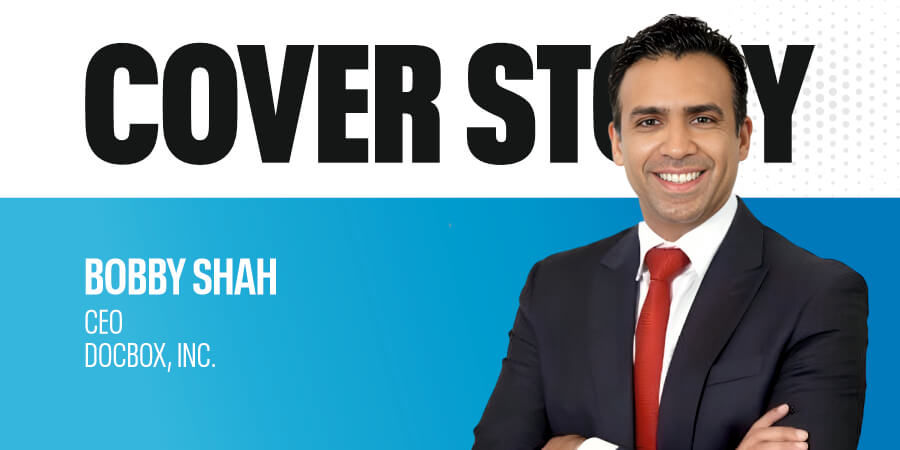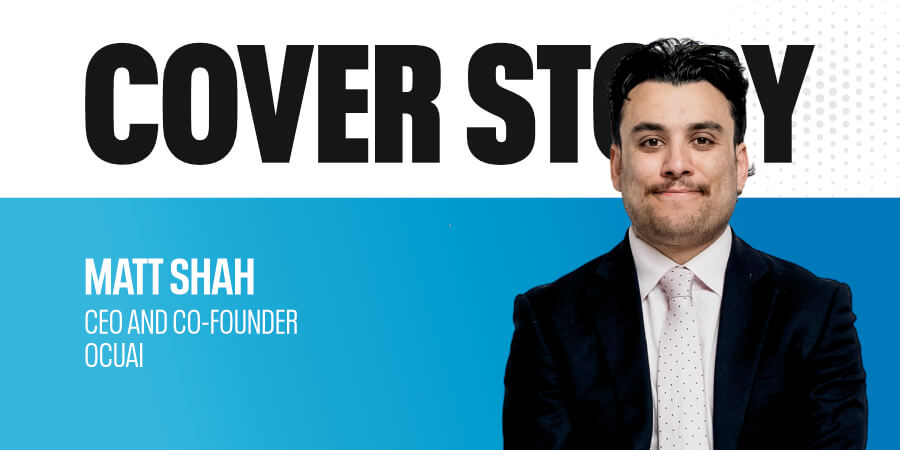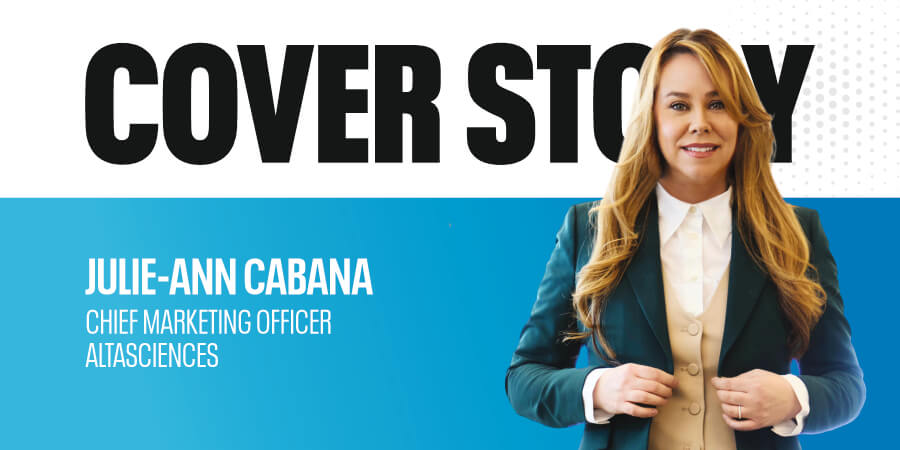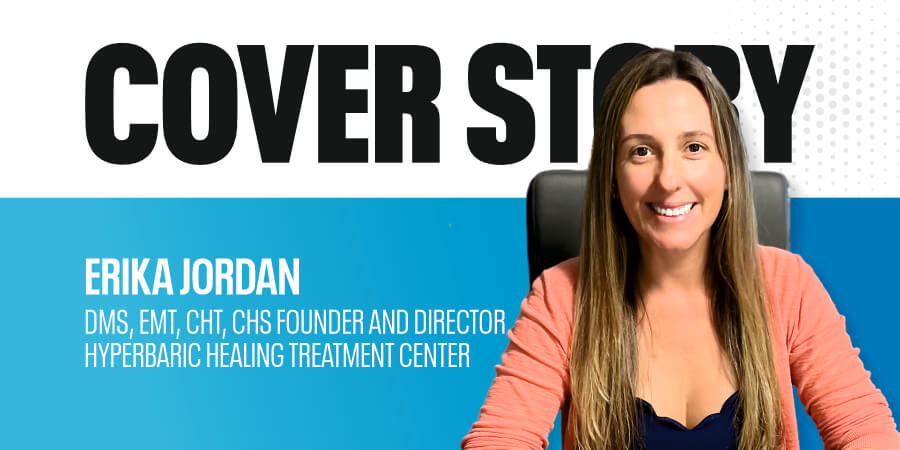“Technology is only as powerful as the intent behind it. When built with empathy, it doesn’t just solve problems—it saves lives.”
The healthcare space needs disruptors. The kind of disruptors who see past dashboards and data lakes to the real stories unfolding in emergency rooms, ICUs, and waiting areas across the world.
The kind of disruptors who understand that in HealthTech, every inefficiency has a human cost. And the kind who are willing to roll up their sleeves, challenge what’s broken, and reimagine the system, not for prestige, but for people. That’s the world Bobby Shah stepped into—not with a pitch deck, but with purpose.
Long before he became CEO of DocBox, Bobby wasn’t building software. He was watching people he loved struggle inside hospitals that were too loud, too chaotic, and too disconnected. And he couldn’t let it go.
So, he did what engineers do best—he broke the problem down. And then he rebuilt it.
What followed wasn’t just a company, but a movement. A new kind of tech built around structured intelligence, clinician-first design, and a bold belief that we could reduce burnout, reconnect care, and put dignity back at the center of medicine.
A Mission Bigger Than Software
Bobby Shah’s journey into healthcare didn’t start in a boardroom. It began in the chaos of real life. He didn’t follow a traditional route paved by textbooks or academic accolades. His calling emerged through witnessing his own family navigate the tangled maze of hospital systems, where inefficiency was dangerous. He knew the system could be better, and more than that, he knew he could help build it.
For Bobby, healthcare has always been the most human form of innovation. That exact purpose found its home at DocBox. When the opportunity came to lead the company, Bobby saw more than a tech platform. He saw potential.
DocBox already had the bones of something big: a vision to automate and simplify clinical documentation. But it needed leadership that could scale the solution, amplify its reach, and bring it where it mattered most: into the hands of the clinicians doing the real work.
Bobby stepped in not for the sake of software, but for the future of intensive care units around the world. He believed that what ICUs needed wasn’t more code. They needed leadership rooted in empathy, impact, and results.
What motivates him every day is the unacceptable reality that accessing care is still a logistical and emotional burden for so many. Around the world, people travel over 75 kilometers just to reach a healthcare facility. Families delay or avoid treatment altogether—not because they don’t need it, but because they fear what it might cost. When Bobby first came to the U.S., he learned that medical bills were the leading cause of bankruptcy. That single fact stuck with him and steered the course of his career.
At the same time, inside the system, clinicians were breaking down. Burnout was no longer a buzzword, but a crisis. Doctors and nurses were drowning in administrative work, navigating siloed systems, and spending more time with keyboards than with patients.
Bobby saw that DocBox could be the answer to that burden. Through automation, device integration, and real-time insights, it could give care teams back their most valuable resource: time.
And it’s working. Under Bobby’s leadership, DocBox has moved from pilot phases to proven impact, cutting nurse documentation time by over 70%, empowering AI-assisted decision-making, and delivering a tenfold return on investment in partner hospitals. But Bobby doesn’t measure success by metrics alone. He measures it by meaning.
“I’m not just a CEO,” he says, “I’m building this because my family was on the other side of this system.”
To him, if EMRs are the hospital’s memory, then DocBox is the nervous system: structured, responsive, and intelligent.
Championing Complexity and Crisis
Leadership in healthcare doesn’t come with a manual. It is forged in moments of pressure, unpredictability, and relentless decision-making. For Bobby Shah, that reality has been his classroom.
Over the years, his leadership style has been defined by a rare combination of agility and accountability. These qualities were sharpened by building solutions in one of the world’s most challenging industries. In healthcare, where innovation collides with regulation and urgency often grinds against bureaucracy, staying nimble is a survival skill.
Bobby’s experience spans everything from navigating global payroll during international delays to leading through a pandemic and negotiating across borders. Each of these chapters taught him the same lesson: transparency and commitment aren’t optional.
Bobby doesn’t lead from a distance. He leads from the front. Whether it’s solving tech bottlenecks, engaging with clinicians, or diving into product design, Bobby rolls up his sleeves and digs in. His ethos is grounded in purpose: never forget who the technology is for.
He often reminds his team what they do, it isn’t about AI/ML and data models. It’s about the patients and providers who depend on every decision they make. That’s who he shows up for. Every single day.
Redefining Success
For Bobby, success isn’t about stock price or media buzz. It’s about something far more tangible: relief, dignity, and better outcomes.
He measures success in the quiet, human moments that rarely make it into investor reports. A nurse who finally has time to hold a patient’s hand instead of clicking through screens. A family that’s spared the devastation of complications that could’ve been prevented. A clinician who feels like a healer again and not a data clerk.
This is the impact Bobby cares about most. Because in his eyes, leadership is about translating a vision into systems that serve people when they are at their most vulnerable.
That’s the line he walks every day: turning advanced technology into real-world relief. Making innovation something you don’t just see in demos—but feel at the bedside.
If the tools his company creates can reduce burnout, restore trust, and bring the human back into healthcare, then by Bobby’s standards, the mission is a success. That’s the only metric that truly matters.
Structured Intelligence at the Heart of Innovation
DocBox was created to address the operational complexity and data fragmentation in critical care environments. In many hospitals, clinicians must interpret information from multiple unconnected devices while documenting manually in high-stress conditions. This setup delays decision-making and increases the risk of oversight.
Under Bobby’s leadership, DocBox evolved into a smart platform that connects medical devices, integrates data streams, and automates documentation. It allows clinical staff to access accurate, real-time information without the burden of redundant data entry.
The platform functions as a centralized operating system across various points of care—from ICUs and emergency rooms to post-op recovery and remote settings. Its architecture is designed to support speed, accuracy, and seamless care transitions.
DocBox has set a strategic target to improve care for one billion individuals. This vision is grounded in implementation, not theory. The platform reduces manual workload, minimizes documentation errors, and supports faster clinical decisions using integrated insights.
At DocBox, innovation is tied to problem-solving, not trend adoption. The team’s focus is on developing tools that address critical inefficiencies in care delivery and patient safety.
DocBox operates as a structured intelligence platform. It captures high-fidelity, time-synced data from every connected device and enhances it with EMR context and clinician notes. This produces a clean, rich dataset that is AI-ready from the moment of capture. With this foundation, both DocBox and its partners can move beyond basic monitoring into proactive clinical insights.
The platform is already being used to build and run AI models capable of detecting early signs of sepsis and hemodynamic instability. These models identify risk hours before symptoms are visible, enabling clinicians to intervene earlier and improve outcomes.
The adaptability of the platform is a core part of its design. It is being implemented in environments ranging from rural clinics with limited connectivity to advanced urban hospitals with high device density. Its flexible architecture allows for effective deployment across varied clinical settings and use cases.
For DocBox, innovation is defined by continuous refinement. The team prioritizes tools that evolve alongside care practices and can meet the demands of clinicians across different regions and infrastructures.
Intelligent, Predictive, and Personal: The Future of Healthcare
Bobby sees the next five years of healthcare defined not just by digital adoption, but by intelligent, predictive, and personalized systems across all levels of care. The industry is moving beyond reactive treatment toward prevention and early intervention, regardless of whether a patient is in a hospital or recovering at home.
However, the effectiveness of AI in this shift depends on the quality of the data it receives. Most health systems still rely on disconnected, inconsistent data sources that limit the potential of machine learning models. DocBox addresses this issue by offering structured, real-time data that is immediately usable by AI systems.
The platform is being used in multiple scenarios:
- Nurses on telemetry floors access vitals, medications, and device inputs that are pre-synced and automatically documented.
- AI models powered by DocBox data flag early signs of respiratory decline during post-op recovery.
- Remote clinicians monitor recovery metrics in real time, reducing the risk of unnecessary readmissions.
- Hospital administrators use analytics from the system to identify inefficiencies in workflows, such as staffing gaps and prolonged handoffs.
Bobby believes these capabilities will become standard in healthcare delivery. Platforms that can integrate with complex, real-world environments will be essential to improving both patient care and operational performance. DocBox is focused on building that infrastructure. One that supports AI, automation, and clinical insight from bedside to boardroom.
Innovation Through Inclusion
Bobby approaches innovation as a collective process that relies on curiosity, inclusivity, and problem-solving across teams and borders. At DocBox, innovation is not limited to technical teams or executive leadership. It comes from clinicians, engineers, and partners across geographies who all share the same objective: improving care delivery.
The company maintains a culture where ideas from all levels of the organization are encouraged. From engineers in the U.S. to clinical collaborators in Europe and partners in India, everyone works within a shared framework: structured data with clinical purpose.
Bobby emphasizes questions that reflect the reality of care: How can this platform give a nurse more time with a patient? How can it help a hospital anticipate and prevent critical events? How can it support better budgeting and operational decision-making?
DocBox conducts quarterly Innovation Roundtables to align teams, share progress, and surface new solutions. These sessions focus not on features, but on measurable impact—predictive models, automated billing workflows, and near-instantaneous care summaries.
The organization fosters collaboration between frontline experience and technical design. This integrated approach allows DocBox to stay aligned with the needs of healthcare systems while continuing to evolve its platform with purpose.
Mantra of Meaningful Impact
Bobby Shah defines success with a simple principle: systems should be built to support the core work of caregiving. His personal mantra reflects this belief:
“Success is when the systems we build allow humans to do what only humans can: care.”
For him, this quote serves as a reminder that every product, workflow, or platform should contribute to improving how people deliver and receive care.
Bobby advises emerging healthcare leaders to develop a clear understanding of the environments they aim to improve. He recommends spending time in clinical settings, observing how care is delivered, and listening to the challenges faced by both patients and providers.
He stresses that effective solutions are built by engaging directly with the people affected by them. This means focusing on patient needs, reducing administrative burdens for clinicians, and designing tools that work within the constraints of real-world systems.
His approach emphasizes practical impact. By aligning purpose with operational goals and committing to outcomes that support care delivery, leaders can build solutions that offer lasting value across healthcare settings.
Breaking the Fear Barrier in Healthcare Access
If he could change one thing in healthcare today, Bobby says it would be the fear that surrounds access to care. In many parts of the world, people avoid or delay treatment not because they don’t need it, but because they are afraid of what it will cost, how complex the process will be, or whether the system will help them at all.
He has seen families crossing borders to receive care. He has met patients who ration medication because they can’t afford a refill. And when he first came to the United States, he learned that medical bills were the leading cause of bankruptcy.
He believes that improving healthcare requires making it easier to approach, more transparent in cost and process, and more accessible to underserved communities. Technology has a role in this effort, not only in improving the quality of care, but in making the system less intimidating and more responsive to the needs of patients.
Leveraging Recognition as a Catalyst
Bobby considers being named one of the most influential healthcare leaders of 2025 as a meaningful milestone. However, being the true leader he is, he views it as recognition of a collective effort rather than an individual achievement.
He credits the founder Tracy Rausch for starting the journey and engineers who put in long hours refining integrations, the nurses and doctors domestic and internationally who contributed their firsthand insights to streamline workflows, and the hospitals that chose to work with DocBox early in its development. Most of all, he acknowledges the patients—many of whom he will never meet—whose care experiences have been positively shaped by the platform.
To Bobby, leadership is not about personal visibility. It is about creating opportunities for others to step forward, contribute meaningfully, and help shape better systems. The recognition serves as a reminder of the responsibility that comes with building solutions in healthcare, and a reaffirmation of the team’s long-term mission.
“DocBox is still growing, and the work is far from over. But the momentum is strong—and the direction is clear,” says Bobby.
Bobby Shah’s work stands at the intersection of purpose and precision. Through DocBox, he is not only advancing technology but reshaping how critical care is delivered, experienced, and sustained.
His leadership is grounded in accountability and guided by real-world challenges, not theoretical ideals. What he’s building is a framework for better outcomes, smarter systems, and more resilient care.
As the healthcare industry looks ahead, voices like his offer more than solutions. They bring focus, urgency, and direction. In a space that often resists change, Bobby Shah is proving what’s possible when action leads with intent.





